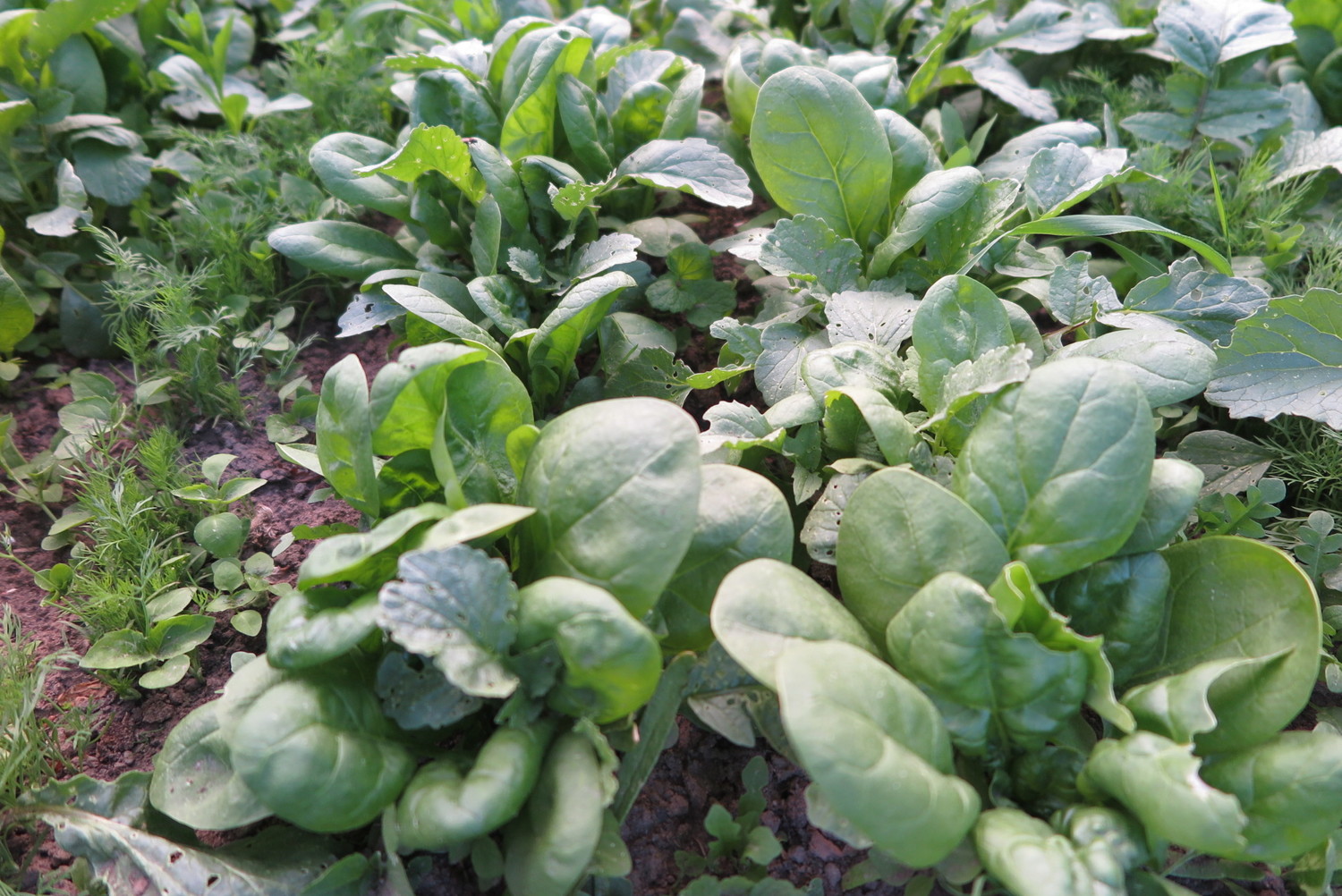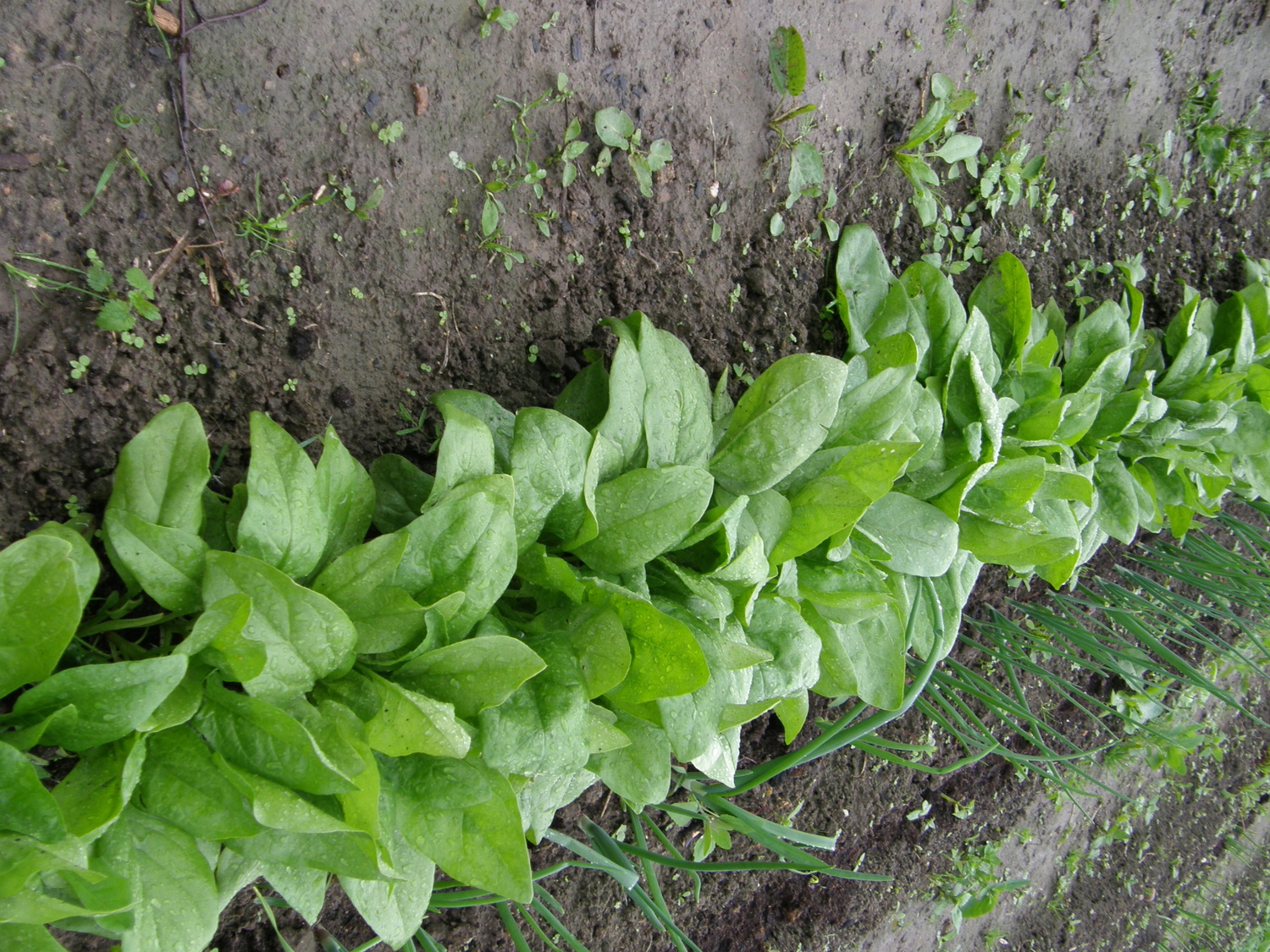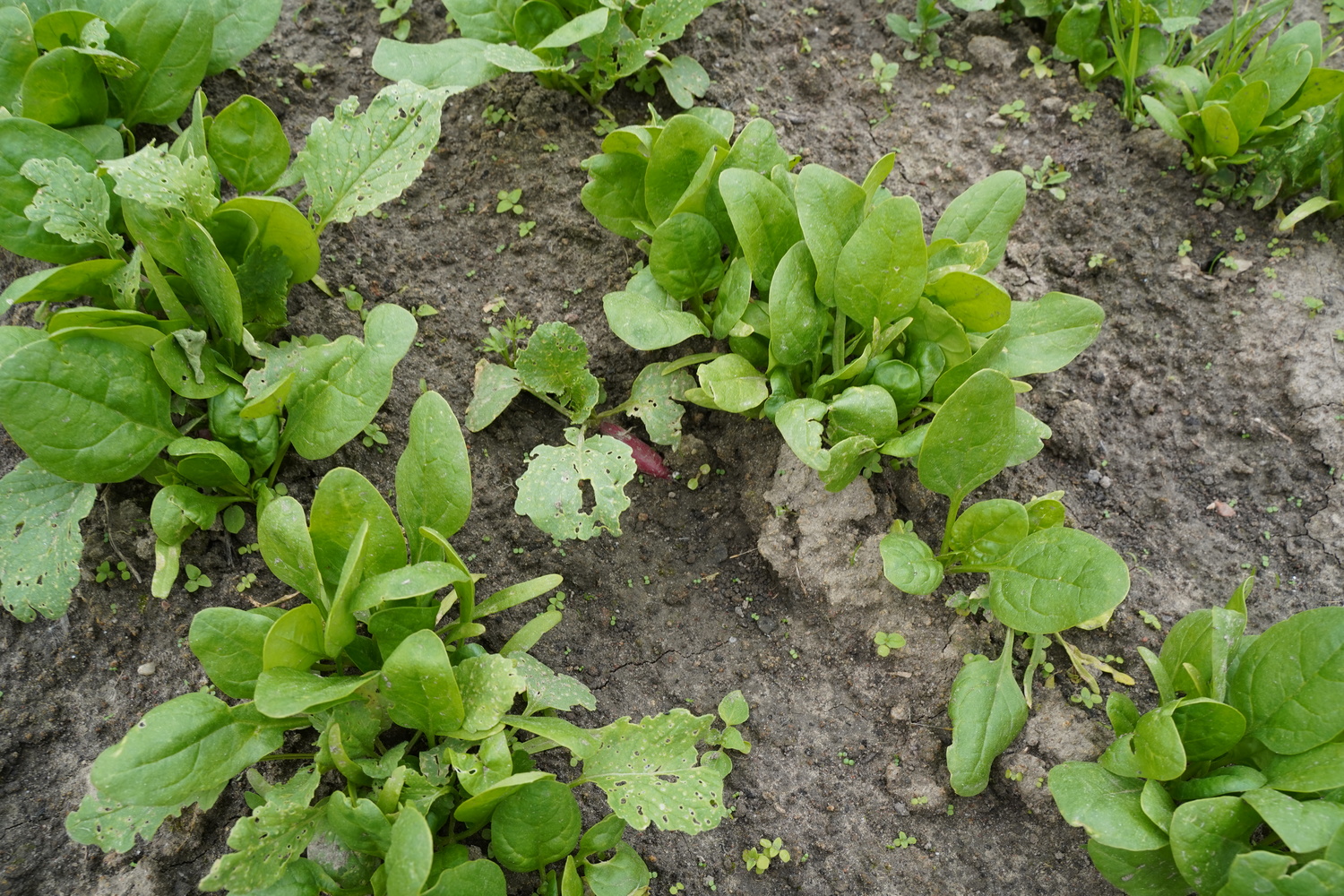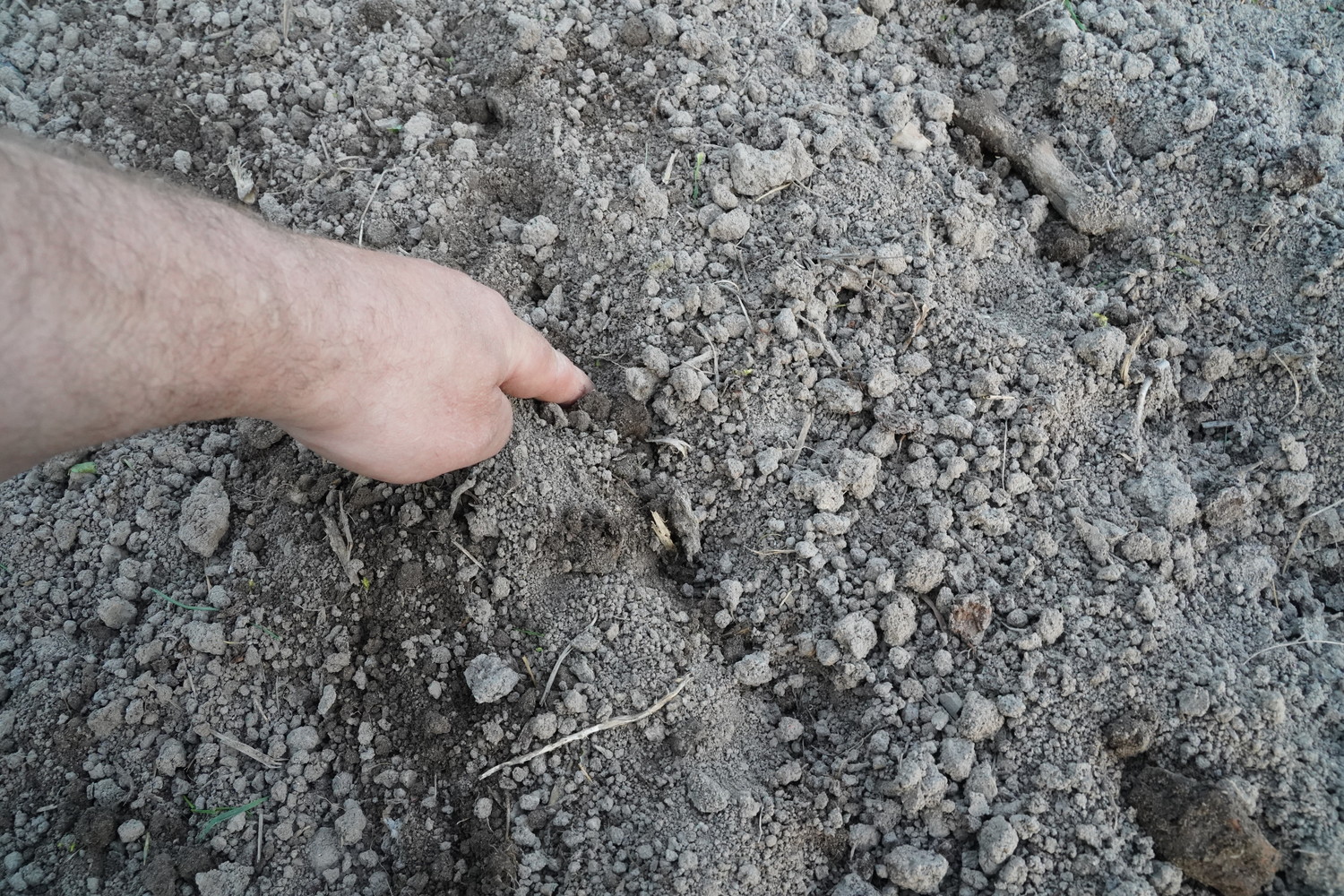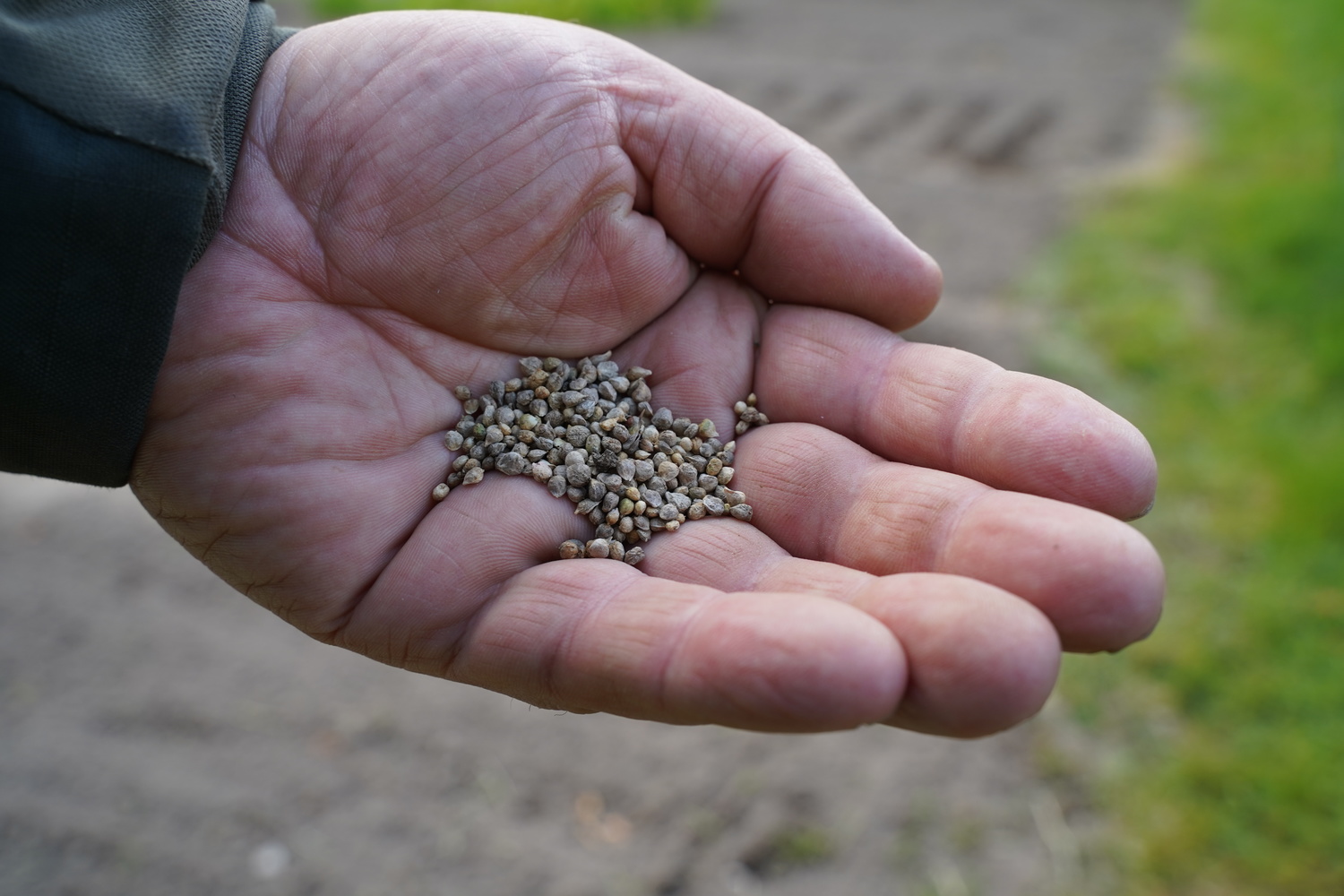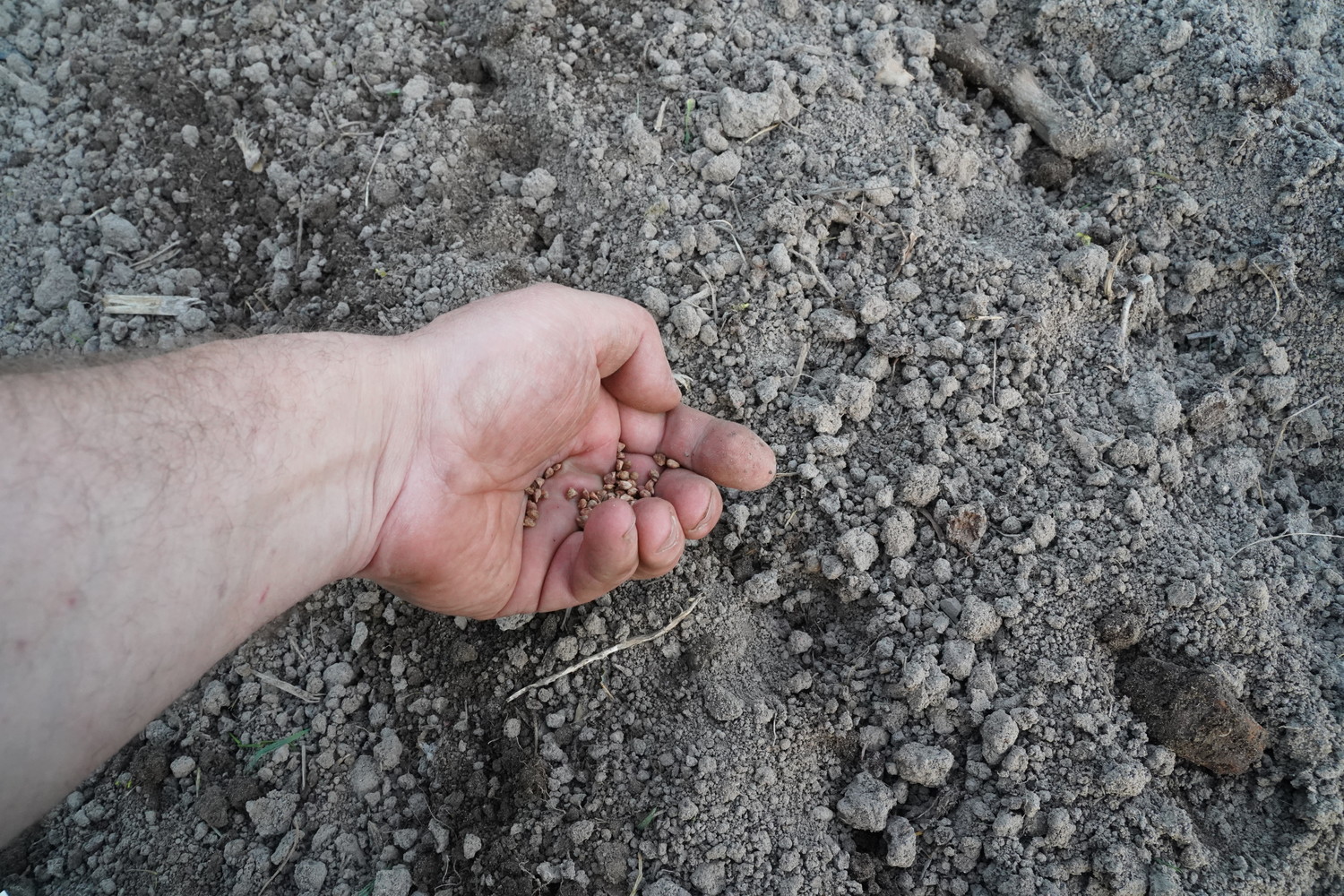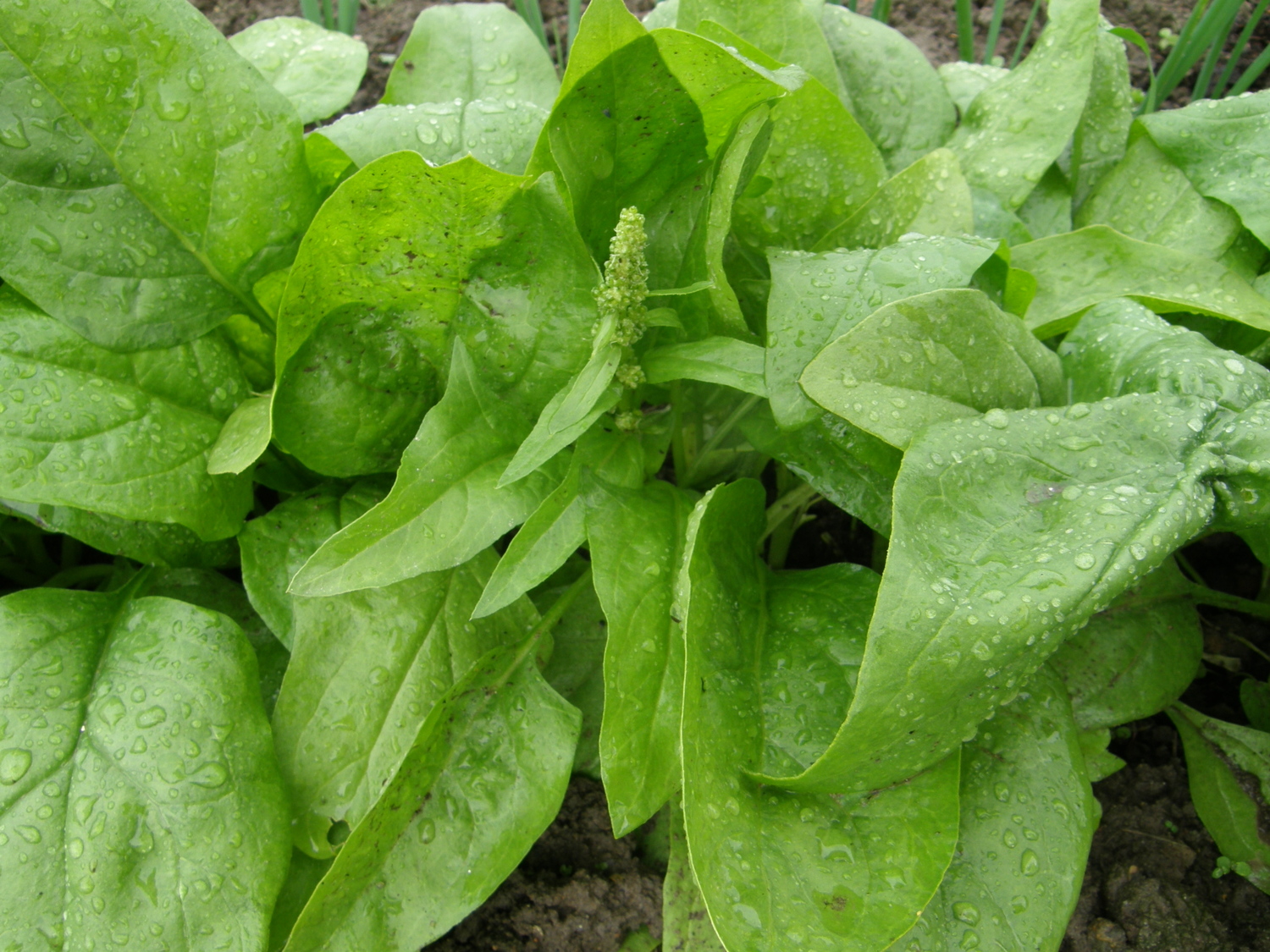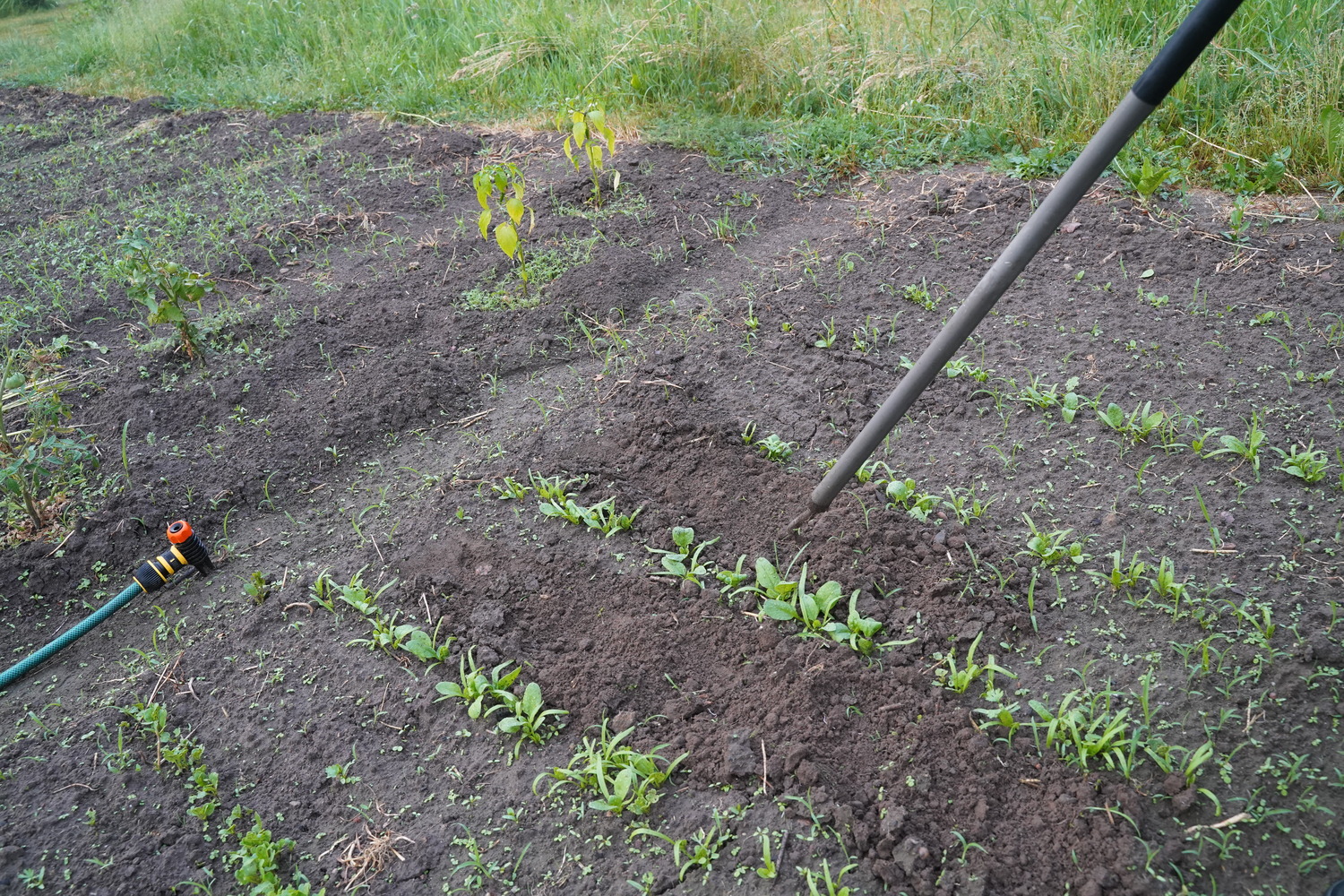Spinach is a low-calorie, highly nutritious green vegetable that strengthens vision, improves digestion, and positively affects the nervous system. Spinach is easily digestible, making it a great addition to any dish and aiding digestion. It can be eaten cooked or raw. With its excellent taste, spinach is perfect for salads or as a side dish to a steak.
It is believed that spinach originated in ancient Persia and was later introduced to China. This highly nutritious vegetable is called the "king of vegetables" and the "broom of the stomach" in France. Spinach contains easily digestible proteins, is rich in vitamins (C, B1, B2, P, K, E, D2), folic acid, and carotene. Additionally, it is packed with iodine and mineral salts such as iron, phosphorus, magnesium, potassium, sodium, and calcium. So, if you have a free garden bed, don’t miss the chance to grow these nutritious greens!
Spinach can be simply harvested or thinned.
Young spinach leaves are used for food before flower stalks develop, as their formation makes the leaves tougher, worsens their taste, and increases oxalic acid content, which is harmful to the human body. It is said that regularly eating spinach helps slow the development of malignant tumors. Spinach is widely used in dietary and children's nutrition because it contains almost all known vitamins and minerals, especially iron. It is easily absorbed but raises blood sugar levels, so people with diabetes should avoid it. Fresh spinach consists of 2.3% protein, 1.7% carbohydrates, 0.3% fat, 0.6% fiber, and 93.3% water. However, it is not recommended to eat spinach every day or in large amounts at once, as it contains a high concentration of biologically active substances.
Radishes are sown among spinach. They sprout earlier and mark the spinach rows, making weeding easier. As soon as the spinach emerges, a hoe is used to clear the rows and newly sprouted weeds. After weeding 2–3 times this way, the spinach grows strong enough to suppress the weeds on its own.
Spinach is one of the earliest leafy vegetables, thriving best under short-day conditions. The most valuable are young, small, and not overgrown spinach leaves.
Soil for Spinach and Spinach Fertilisation
Spinach is grown in well-prepared, fertile soil. It thrives in fertilised and moist soil. The best option is humus-rich loam that retains moisture well but does not become waterlogged. In sandy soil, spinach requires frequent watering. During droughts, it should be watered weekly with 20 liters of water per square meter. Spinach prefers neutral soil (pH 5.5). It is best planted after organically fertilised vegetables such as potatoes or cabbage. Spinach can be grown in the same location only after three years.
For early and late harvests, choose a bright area protected from northern and eastern winds, preferably with a slope facing south. The soil is prepared in autumn by deep digging and incorporating 30 g of superphosphate and 15 g of potassium chloride per square meter. If the soil is acidic, it should be limed. In spring, 30 g of ammonium nitrate, 5 g of potassium chloride, or a complex vegetable fertiliser with additional microelements beneficial for spinach is applied per square meter. Potassium fertilisers should not be overused, as excess potassium causes spinach stems to grow quickly and become woody.
Spinach Sowing and Cultivation
Spinach is one of the earliest leafy vegetables, which grows well only under short day conditions. Its seeds germinate even at +4ºC, and both the seedlings and mature plants are cold-resistant, withstanding frost down to -6ºC.
Spinach seeds are large, making it easy to regulate the sowing distance.
To get an early harvest, spinach can be sown in the fall or early spring. When sowing in the fall, it should be done before the first frost, ensuring the seeds do not germinate. The seeds begin to sprout at a temperature of 4°C. They are sown at a depth of 2-4 cm. Once the spinach has germinated, it should be thinned on time, leaving a 7-8 cm gap between the plants. When thinning for the second time, every other plant can be pulled and used for food. If spinach is grown too densely, it will begin flowering early, which will reduce its quality. Since spinach grows quickly, to save space, it can be sown in the gaps between slower-growing vegetables (e.g., peas, beans, and leeks) in the spring.
Create shallow furrows, place the seeds in them, and gently press them in. Then, level the soil and compact the ground.
The best growth temperature for spinach is 14-18 °C. The leaves are harvested in May- June, after which the plant begins to form flowers, reducing its nutritional value. However, if you want fresh vegetables in winter, growing spinach in a greenhouse would be a good solution. Low temperatures do not affect their growth, so they can be sown even towards the end of the year. If you sow by October, you can harvest the crop within the same year.
Spinach should be grown in a location that receives the most sunlight. Once the first true leaves appear, a better yield can be obtained by watering with a solution of potassium or ammonium nitrate (10 l / 20 g). Watering should be done so that each square meter receives 6-8 liters of the solution. After applying the fertiliser solution, it's essential to water with clean water to prevent burning the seedlings.
Since spinach is very demanding in terms of moisture, when there is a lack of it, the plants start to form stems, and the leaves become rough. Watering should be generous, about 20 liters per week per square meter, preferably in the evening. Like all plants, spinach prefers loose soil, so it is important to regularly loosen the soil. This not only maintains soil aeration but also prevents weed growth. Spinach that is growing poorly can be watered with the same solution used for watering germinated plants.
Spinach Harvesting
From sowing to harvest, spinach takes about 8 weeks. The harvest is collected when the plant has 5-6 leaves. If you regularly cut the spinach leaves a little above the ground, you can harvest multiple times from each plant. The lower leaves are harvested, or the entire plant is cut before it starts forming flowers. Once the spinach flowers, it is no longer suitable for consumption.
The leaves of flowering spinach can be used to make blended spinach soup.
Spinach can be used fresh immediately or can be preserved or frozen. You can harvest 1.5-2 kg of leaves per 1m². After harvesting the early crop, cucumbers or other vegetables can be planted in the same spot. To have good quality spinach for a longer period, you can sow them multiple times.
Spinach Diseases and Pests
To avoid diseases, crop rotation should be followed, and spinach should not be grown in the same location for 3 years. Spinach should be planted away from beets and should be regularly weeded.
The most common issue is downy mildew. Yellow spots appear on the upper surface of the leaves, and gray-violet patches form on the underside. The areas with spots dry out, the leaves curl, and the plant develops poorly. Favorable conditions for the disease are damp, cool weather and excessive nitrogen fertilisation. The disease is controlled by removing infected plants, using healthy seeds, and treating them with fungicide.
In heavy and dense soils, spinach can suffer from root rot. The root collar turns black and does not expand, causing the plants to collapse. To prevent the disease, soil loosening will help.
Rhubarb weewils are typically active in May- June in the garden, feeding not only on rhubarb but also on spinach and other crops. Adult beetles damage vegetable leaves and flower heads by making small holes. The larvae feed on the roots. Female beetles lay their eggs on the soil surface, and once hatched, the larvae develop in the soil, where they become pupae. It is only in the second half of the summer that new beetles appear, which then hide under plant debris and in the topsoil layer for the winter. The beetles are 4-5 mm long, grayish-yellow, and resemble soil clods.
When dealing with pests, it is essential to remove plant debris in the fall to prevent overwintering pests. During the summer, it is important to control weeds, as they can provide shelter and food for pests. If rhubarb flea beetles spread massively, plants should be sprayed with biological preparations.

